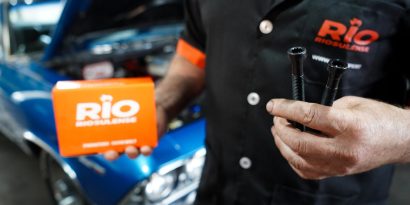Preventive vehicle maintenance is essential for ensuring safety, performance, and cost savings by preventing breakdowns and extending your vehicle’s lifespan.
The engine is made up of hundreds of parts working in sync to generate power and enable movement. Among them, piston rings play a central role in the smooth operation of the system, despite their small size. Understanding what piston rings are, how they work, and how to identify signs of wear can help you avoid trouble, losses, and unexpected breakdowns.
In this article, you’ll learn in detail about the importance of piston rings, the main warning signs of problems, and valuable tips to keep your engine performing at its best for longer.
What are piston rings and why are they so important?
Piston rings are circular, usually metallic components installed in the grooves of each engine piston. They essentially act as seals, positioned between the piston and the cylinder walls. Their three main functions are:
- Combustion gas sealing: They prevent gases generated during combustion from escaping into the crankcase, maintaining optimal pressure and, therefore, engine efficiency.
- Oil consumption control: They stop lubricating oil from seeping into the combustion chamber, controlling oil usage and preventing unwanted smoke from the exhaust.
- Heat dissipation: They aid in transferring heat generated in the combustion chamber to the cylinder walls, helping cool the assembly.
Main signs of worn piston rings
Piston rings operate under extreme conditions—high temperature, pressure, and constant friction. This means they are prone to wear over time. Recognizing the signs that they require attention is vital for your vehicle’s health.
1. Abnormal oil consumption
One of the first signs of piston ring wear is increased consumption of lubricating oil. This occurs when the rings can no longer seal properly, allowing oil to enter the combustion chamber and burn off.
2. Bluish or gray smoke from the exhaust
If your vehicle starts emitting blue or gray smoke from the exhaust, it’s likely that oil is burning alongside fuel, a direct consequence of faulty rings. This symptom is especially noticeable during hard acceleration or after long periods of idling.
3. Loss of power and performance
Failing seals reduce cylinder compression, compromising combustion efficiency. The result is a “weak” engine that responds slowly to the accelerator and may underperform, especially on hills and under heavy loads.
4. Leaks and abnormal crankcase pressure
Excessive wear can lead to oil leaks and increased internal crankcase pressure. This can be detected if, when opening the oil cap with the engine running, you notice excessive smoke or pressure escaping.
5. Misfires and increased fuel consumption
As efficiency drops, you may notice difficulty starting the engine, irregular running, and increased fuel consumption. More severe cases can require a complete engine overhaul.
Tips to extend the life of your piston rings
- Change the oil regularly: Always use the type and viscosity recommended by the manufacturer and stick to the right intervals.
- Use quality fuel: Fill up at trusted stations to avoid contaminants and impurities entering your system.
- Watch for suspicious symptoms: If you notice smoke, increased oil consumption, or power loss, have your car checked by a mechanic immediately.
- Warm up the engine before high revs: This prevents thermal shock and premature part expansion.
- Preventive maintenance is always the best choice: Regular care preserves not just the rings but your entire engine.
Frequently asked questions about piston rings
1. How often should piston rings be replaced?
Piston rings typically last between 100,000 and 150,000 miles (160,000 to 240,000 km), depending on use and maintenance. Symptoms like smoke or high oil consumption justify early inspection.
2. Is it okay to drive with worn piston rings?
It is not recommended. There is a high risk of major engine damage and increased oil and fuel consumption.
3. Does blue smoke always indicate piston ring problems?
Most of the time, yes, but worn valves or valve guides may also be to blame. Professional diagnosis is essential.
4. What happens if I ignore the signs?
Ignoring symptoms can lead to expensive repairs, making it costlier to restore your car’s integrity.
Count on RIO for high engine performance
Maintaining piston ring integrity is crucial for ensuring your vehicle’s power, efficiency, and longevity. RIO, a benchmark in precision automotive parts since 1946, offers top-quality piston rings developed with advanced technology for engines of all sizes, from passenger vehicles to trucks and agricultural machinery.
Visit our website to discover the full portfolio of RIO parts. Drive with greater efficiency and peace of mind by choosing reliable components that protect the heart of your engine!
Check out all RIO engine products now!





